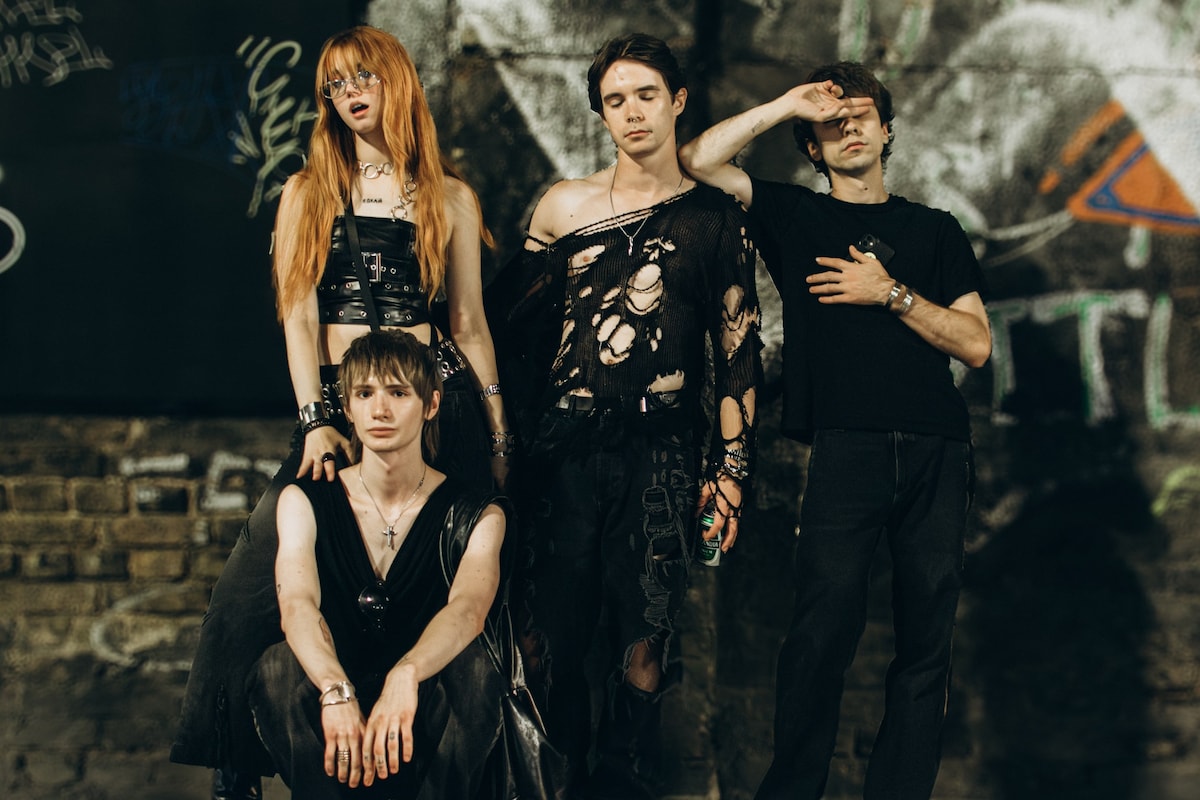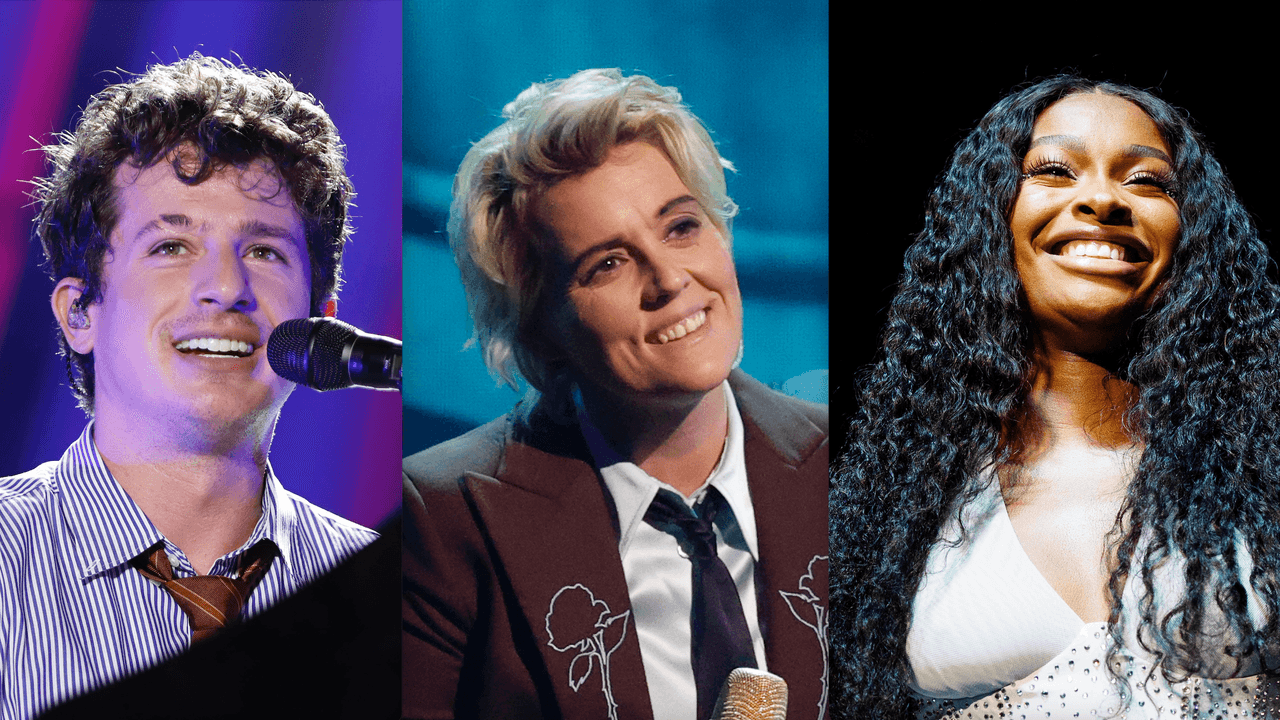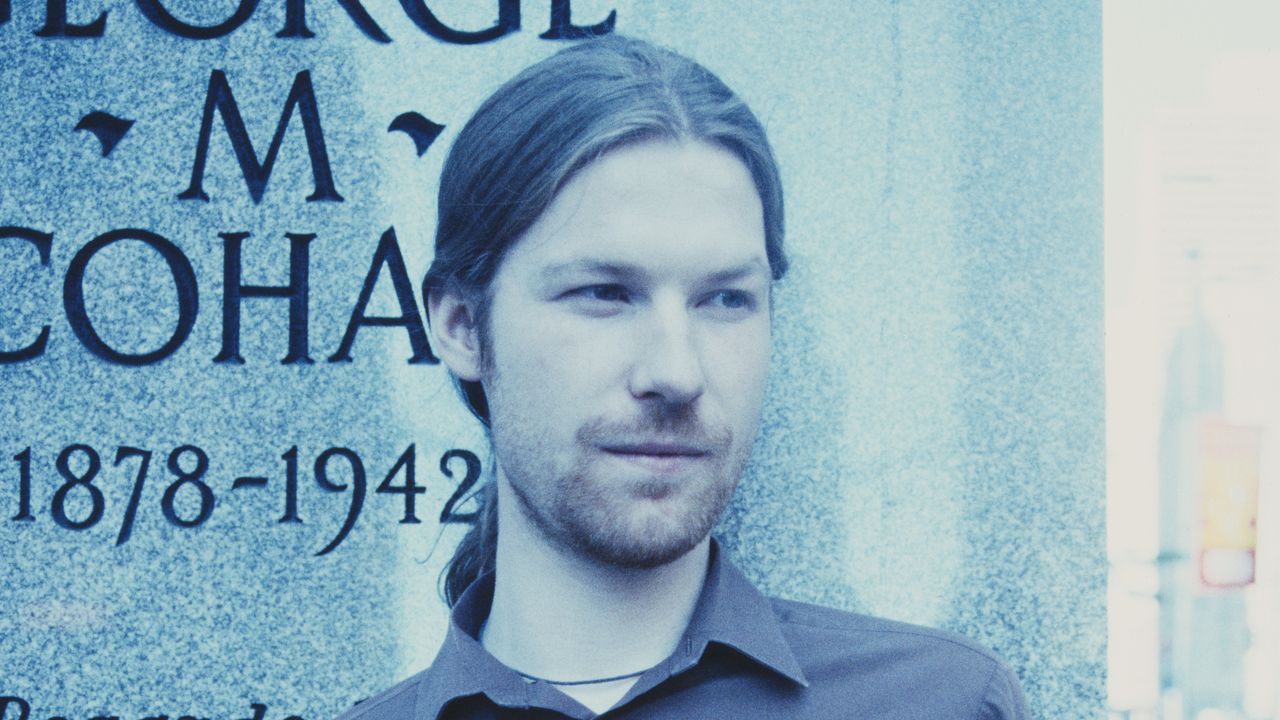Kyiv’s hottest club does not exist: ∄, often referred to as Kyrylivska 41 (or K41) for its street address, is paradoxically both famous and nameless. Hosted in a massive former brewery in the industrial Podil district, ∄ – the only dedicated queer club in the capital – has become the heart of the local techno scene and a hub for activism since opening in 2019.
The ∄ nightclub is an incredible playground for free expression of dress and intimacy, otherwise impossible on the streets of Kyiv. With a strict door and no-photo policy, it might be described as a safe space if it weren’t for the drones and rockets flying overhead. Still, ravers pack out the nightclub every Saturday, eager for connection among the chaos.
The symbol “∄” is a mathematical notation which signifies that something does not exist. 28-year-old CEO Nastya Syradoieva says that the idea is to encourage an IRL experience: “You just need to explore it by yourself,” she tells me. “What really concerns me now with [∄] is that Russia is trying to destroy us… and they don’t want us to exist. But I think it’s really important not to change our plans, our vision, because of the fucking Russians.”
When Russia launched its full-scale invasion of Ukraine in February 2022, ∄ briefly functioned as a shelter for nearly 200 people. “This building survived two world wars; it’s kind of safe,” Syradoieva says. Unusually for Ukraine, much of ∄’s original 19th-century architecture has been maintained, with red brick and stone columns contrasting modern steel and concrete. Berghain architects Studio Karhard, who renovated the venue, have balanced massive architectural features retained from the brewery with small private spaces.

In late spring 2022, ∄ staff toyed with the idea of opening the doors again, soft-launching the idea with an evening of ambient music. “People just started to dance because that’s what they need, right?” Syradoieva says. ”That was a moment when we realised that it’s not us as a team should decide if we can dance or not. It’s our community should make this decision.”
Since its post-invasion reopening, ∄ runs entirely as a non-profit to support the war effort. Money is pooled in the K41 Community Fund, which to date has raised over £700,000 to support the frontlines, ranging from military trucks to sleeping bags. Pavlo Musiyko, 32, is a recent veteran and manages the K41 Community Fund. The first party Musiyko went to after his time fighting in the war was at ∄ – his first time at a rave, and where he felt he truly found community. “Before the full-scale invasion, I was a dancer: hip-hop, house, break dance. For me, music is always everywhere,” Musiyko says. Because he was stereotyped as gay for his dancing, today Musiyko is an outspoken LGBTQ+ ally and allocates funding to inclusive Ukrainian army battalions.
Bouncer Helen Poputnikova is a famous character after four years working at ∄. Covered in tattoos – she also works as a tattooist at the club – with big Tim Burton eyes, she tells me about how the club has evolved over the years. Before war, she explains, it was common for parties at ∄ to last four days in a row. Today, with new curfews in place, events begin at noon and end at 11pm, leading to the strange sight of a nightclub crowd queuing in the broad daylight of 3pm. She adds that shortly after reopening, there were fewer people at the club than normal, as many of the club’s regulars and staff joined the army or fled the country as refugees.
By 2023, ∄ became busier as Internally Displaced People (IDPs) fleeing Eastern and Southern occupied territories of Ukraine began moving to Kyiv. Many were from small villages where queer nightlife might be nonexistent. For them, ∄ was an introduction to a new world. “With [IDPs] it was important to have kind of educational work on the entrance, so the conversations I had were longer and more explanatory.” Poputnikova says. “I feel this energy at the entrance from the people who come here, this kind of tiredness and sorrow that they have inside. It’s very hard to translate it into words.”

When I visit, ∄ team members are mourning the recent death of Roma Tarasiuk, formerly a tattoo artist at ∄ alongside Poputnikova. When the war began, Tarasiuk volunteered to join the army, fighting in a battalion with his friends called the “Kayfariki,” which roughly translates as “those who enjoy life.” An anti-fascist skater, Tarasiuk was far from the stereotype of a typical Ukrainian soldier. He died in close combat with Russian soldiers just two months ago. His loss is still an open wound for the team, several of whom sport pieces from Tarasiuk’s clothing brand “Ukraine or Death.”
One such team member is Maya Baklanova, a propaganda expert and member of the scene. She maintains a blacklist of foreign DJs with Russian connections, which is shared globally across the electronic music scene, and wears the “Ukraine or Death” logo proudly. “Russia weaponises culture,” Baklanova says. “Culture is a very important tool in the war.” Her activism puts pressure on artists who have performed in Russia since the beginning of the full-scale invasion, and on Russian artists who have stayed silent. “Russians are travelling around the world and building their careers […] while they’re waging brutal, unimaginably huge war in the centre of Europe,” she says. “My activism here is to make sure we don’t legalise this war or make it normal.”
Today, more than 10 per cent of ∄’s weekly visitors are active or retired service members, with many arriving straight from – or heading directly to – the frontline. Almost everyone in the crowd has a friend or family member serving. To support them, ∄ has opened an LGBTQ+ Veterans Hub, led by veteran and activist Viktor Pylypenko, Ukraine’s first openly gay military member. The hub offers legal, social, and sexual health support.“For me [coming out] was an existential decision,” Plypenko says. “I devoted my life to this country.” He continues: “There was a myth that… LGBTQ+ people are all communist party, which is very pro-Russian, you know? I wanted just to stop all the speculation, to put an end to the myths.”
I feel this energy at the entrance from the people who come here, this kind of tiredness and sorrow that they have inside. It’s very hard to translate it into words
Pylypenko’s coming out has paved the way for other active duty members to serve while openly LGBTQ+. One such service member is Grisha Kit, who previously worked as a manager at ∄, a job which he described as “work for the soul”. Kit started at ∄ on the very first day it opened. “When it was the first day, I realised that something big was in the air,” he says.
The night I speak to Kit, two dance spaces are open: the Backyard and the Second Floor. On the Second Floor, pulsating lights are hung like stars in a cloud of smoke. The sound system is impressive, filling the room with hard techno at all angles. But the Backyard is where ∄ truly shines. Huge concrete steps are arranged around DJ decks, creating endless mini stages and an essentially a vertical dancefloor. The scale is dizzying, and the practicalities confusing – it shouldn’t work, but it does.
The crowd is mixed. There are veterans with prosthetic limbs and dog tags, young women in elf ears and bejewelled bikinis, and muscular men in leather fetish gear. The atmosphere is unique, heavy and light at the same time, unified in pain and release. Denys Yurchenko, a DJ and member of music school collective Kultura Zvuku attending the night, says for him, the atmosphere is the opposite of hedonistic. “It might look like [hosting] a feast during a plague, but it’s not,” he says. “Everybody has got their own [story].”
As the sun sets on ∄, columns of lights dance in the backyard, illuminating characters like local legend “Superman” in his cape, a woman twisting gracefully in a sequined dress, and a man in a leather dog mask. It doesn’t look like a warzone, but in a few short hours, everyone dancing will be rushing home before curfew, knowing missiles may force them from their beds in the night. For now, though, both on the frontlines and behind the scenes, Ukraine is building a new kind of unity.



